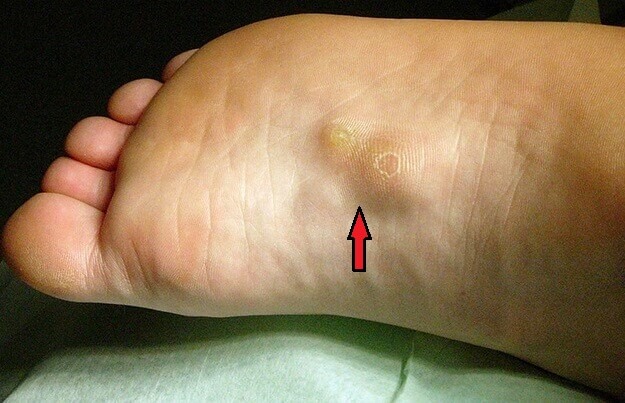Where Is The Pain In Plantar Fasciitis Located?
Approximately one in 10 people develop plantar fasciitis. It is most common in young male athletes and middle-aged obese women.
This condition is caused by too much pressure and stretching on the plantar fascia.
Therefore, it is important to avoid wearing shoes that do not provide sufficient support and cushioning for the feet.
Furthermore, avoiding prolonged standing is essential. If you suspect that you have plantar fasciitis, consult a medical professional for a diagnosis.
Foot Shape
Whether or not you have plantar fasciitis depends on how you walk.
Generally, people with high arches have tighter arch tissues, which reduces the absorbent capacity of the foot and increases the amount of pressure on the arch and other structures.
People with flat feet have too much pressure on the arch of the foot and this places excessive strain on the plantar fascia, which can elongate beyond its functional capacity and become painful.
Moreover, in patients with plantar fasciitis, foot shape is significantly correlated with the amount of pain.
The area of the plantar fascia was thicker in the symptomatic limb than in the asymptomatic one.
The same was true for the region of the arch that was most affected. The pain was positively correlated with both fascial thickness and arch angle and with the peak regional loading in the symptomatic foot.
Gait


The first few steps of a day are the most common time when patients experience symptoms of plantar fasciitis.
This pain is often sharp and can be relieved by simply lifting up the leg and gently walking for a few minutes.
However, the pain returns in a more dull, aching form after weight-bearing activities, such as walking or running. Some people also experience pain when sitting for an extended period of time.
Patients who experience plantar fasciitis pain report that the condition is most severe when they are walking upstairs or walking barefoot on hard surfaces.
Symptoms may also be aggravated by prolonged standing or sprinting.
Other symptoms of plantar fasciitis include stiffness, redness, warmth, or swelling in the middle of the bottom of the foot.
If these symptoms persist even after rest, it may be a sign of plantar fasciitis.
Shoes
The first step in treating plantar fasciitis is to reduce the strain on your feet.
While a few simple home remedies may help relieve swelling, the most important treatment is to get some proper support for the plantar fascia.
In some cases, stretching and strengthening exercises can relieve pain. For moderate symptoms, ice and shoe inserts may be prescribed. In severe cases, orthotics or surgery may be required.
When selecting plantar fasciitis shoes, try to find a style that works well for you try on a few pairs of different shoes before making a decision.
Also, make sure you check the return policy of the store. You may want to wear dress shoes, high heels, or running shoes for different purposes.
Your doctor may recommend a pair of flats for running or walking. The right shoes can also make a big difference.


Treatment Options
There are a number of treatment options for plantar fasciitis pain. Stretching and anti-inflammatory medications can provide short-term relief.
In addition, steroid injections can reduce inflammation.
However, treatment is not permanent and symptoms may persist for months or year
In such cases, you may need to seek help from a physician to find the best course of treatment for your condition.
In addition to stretching and medication, you can also consider using an elliptical machine to reduce the impact of the foot.
A lack of proper biomechanics can also cause Plantar Fasciitis.
It is a common condition that affects athletes, those who stand for long periods, and individuals who have flat feet.
People with flat feet or high arches may also be susceptible.
People who are overweight or obese are at risk for the condition, as well as those who perform repetitive physical activities such as gardening, sweeping, and walking for long periods of time.
Predisposing Factors
There are many predisposing factors for plantar fascia pain. These include repetitive heel impact and obesity.
Patients with plantar fasciitis often suffer from pain when they first get out of bed, stand for prolonged periods, or get up from sitting.
Your health care provider will review your medical history and examine the area where you feel pain. A doctor will also check for swelling or tenderness.
Some studies have linked heel spurs with plantar fasciitis. This isn’t backed by other research.
However, it is important to remember that over-stretching your plantar fascia is another possible cause of heel spurs.
If you suffer from plantar fasciitis, this is a sign that you may have overstretched it.
To reduce the risk of developing plantar fasciitis, you should learn more about the causes of this condition and how to prevent it.
Conclusion
Tell us anything you know about ”Where Is The Pain In Plantar Fasciitis Located?
Remember your health is wealth
Please let us know your thoughts in the comments section.




